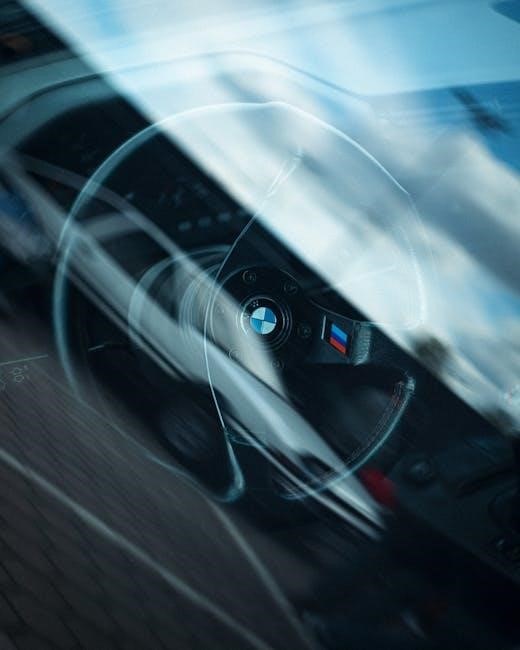E46 M3 SMG to Manual Conversion: A Comprehensive Guide
The E46 M3, a performance icon, sometimes faces criticism for its SMG transmission. This comprehensive guide explores converting your SMG-equipped E46 M3 to a traditional manual. We will discuss the reasons, benefits and give you a step-by-step conversion process.
The BMW E46 M3, celebrated for its exceptional balance of power and handling, was offered with two transmission choices: a traditional 6-speed manual and the SMG (Sequential Manual Gearbox). The SMG, a first-generation automated manual, aimed to provide faster shift times and a more engaging driving experience compared to a conventional automatic. However, it often falls short of the connected, raw feel of a true manual transmission.
Many E46 M3 owners find themselves yearning for the more traditional and engaging driving experience offered by a manual gearbox. The SMG system, while innovative for its time, can suffer from reliability issues, costly repairs, and a driving feel that some perceive as disconnected. As a result, SMG to manual conversions have become a popular modification for E46 M3 enthusiasts.
This conversion involves replacing the SMG system with a complete manual transmission setup, including the gearbox, clutch, flywheel, pedal assembly, and associated components. While this swap requires a significant investment of time, money, and mechanical skill, the benefits often outweigh the costs for those seeking a more authentic and rewarding driving experience.
Reasons for Converting from SMG to Manual
Several compelling reasons drive E46 M3 owners to convert from the SMG to a manual transmission; One primary factor is the enhanced driving experience. Many drivers find the SMG lacks the direct connection and control offered by a traditional manual. The manual transmission provides a more engaging and rewarding experience.
Reliability concerns also play a significant role. The SMG system, being a first-generation technology, is prone to failures and expensive repairs. Components like the hydraulic pump, actuators, and sensors can fail, leading to significant downtime and repair bills. A manual transmission, in contrast, is mechanically simpler and generally more reliable.
Furthermore, the cost of maintaining the SMG system can be prohibitive. Replacement parts are often expensive and difficult to source. Converting to a manual transmission can be a more cost-effective long-term solution, especially considering the increasing age of the E46 M3 platform. Finally, some owners simply prefer the feel and control of a manual, aligning with the car’s sporting character.
Benefits of a Manual Transmission in an E46 M3

Converting to a manual transmission in an E46 M3 yields several notable benefits. Firstly, the enhanced driving experience is a significant advantage. A manual transmission provides a more direct connection to the car, offering greater control and engagement. This translates to a more enjoyable and rewarding driving experience, especially for enthusiasts who appreciate the art of driving.
Improved reliability is another key benefit. Manual transmissions are mechanically simpler than the SMG system, reducing the likelihood of failures and costly repairs. This can lead to lower maintenance costs over the long term, making the conversion a financially sound decision.
Furthermore, a manual transmission can enhance the car’s performance. While the SMG offers quick shifts, it can sometimes feel disconnected. A manual allows for more precise control over gear selection, maximizing the engine’s power and torque. This can result in improved acceleration and overall performance. Finally, a manual conversion can increase the car’s resale value, as many enthusiasts prefer the traditional feel of a manual gearbox.
Parts Required for the Conversion
Undertaking an SMG to manual conversion on an E46 M3 necessitates a comprehensive list of parts. At the core is a complete 6-speed manual transmission, ideally a Getrag 420G. This transmission is known for its durability and compatibility with the E46 M3. A crucial component is the manual transmission bellhousing, as the SMG bellhousing lacks the necessary features for a manual setup.
The clutch system is another essential element. This includes a new clutch disc, pressure plate, and release bearing. It is advisable to replace the flywheel as well, opting for either a new or resurfaced unit. The pedal assembly, including the clutch pedal, brake pedal, and associated hardware, is required to provide manual control.
Additional components include a manual transmission shift linkage, shift knob, and various bolts and fasteners. A new pilot bearing for the crankshaft is also recommended. Finally, don’t forget the coding aspects such as a plug and play wiring harness. Sourcing genuine BMW or OEM parts ensures proper fitment and reliability.

Sourcing a 6-Speed Manual Transmission
Finding a suitable 6-speed manual transmission for your E46 M3 SMG to manual conversion requires careful consideration. Begin by exploring reputable online marketplaces and forums dedicated to BMW parts. These platforms often feature listings from individuals or specialized vendors offering used or refurbished transmissions.
Consider reaching out to BMW dismantlers or salvage yards specializing in European vehicles. These establishments may have E46 M3s with manual transmissions from which you can source the necessary parts. Check local classifieds and online auction sites for potential deals on used transmissions.

When evaluating potential transmissions, inquire about the mileage, condition, and history of the unit. Request detailed photos or videos to assess its overall state. It’s advisable to seek transmissions from reliable sources with warranties or return policies. Before finalizing the purchase, verify the transmission’s compatibility with your specific E46 M3 model year and submodel. Inspect the transmission thoroughly upon receipt to ensure it meets your expectations.
Essential Components: Clutch, Flywheel, and Pedal Assembly
The clutch, flywheel, and pedal assembly are pivotal for converting your E46 M3 from SMG to manual. Selecting the right clutch kit is essential, as it directly impacts performance and driving feel. Consider factors like power levels and driving style when choosing a clutch. Options range from OEM replacements to performance-oriented upgrades.

The flywheel also plays a crucial role in the conversion. A lightweight flywheel can improve throttle response and acceleration, while a heavier option may offer smoother engagement. Inspect the condition of the flywheel surface and replace it if necessary.
The pedal assembly is another key component. You’ll need to acquire a complete manual pedal assembly, including the clutch, brake, and accelerator pedals. Ensure the assembly is compatible with your E46 M3’s chassis. Inspect the pedal bushings and pivots for wear and replace them as needed. The clutch master cylinder and associated hydraulic lines are necessary for proper clutch operation. Consider replacing the clutch slave cylinder as well for optimal performance.
Bellhousing Modification or Replacement
A crucial aspect of the SMG to manual conversion on the E46 M3 involves addressing the bellhousing. The SMG bellhousing differs from the manual version, particularly in its lack of provisions for the clutch fork and related components. Therefore, you’ll need to either modify your existing SMG bellhousing or source a manual transmission bellhousing.
Modifying the SMG bellhousing typically involves machining it to accommodate the necessary components. This requires precision and expertise. Alternatively, acquiring a manual transmission bellhousing eliminates the need for modification, ensuring a factory-like fit and finish.
When choosing between modification and replacement, consider factors such as cost, availability, and your comfort level with machining. If you opt for modification, ensure you have access to a qualified machinist with experience working on BMW bellhousings. Proper alignment and tolerances are critical for optimal clutch operation and transmission longevity. Some prefer the peace of mind that comes with using a factory manual bellhousing. Ensure you inspect the bellhousing for damage.
The Conversion Process: A Step-by-Step Guide
Converting your E46 M3 from SMG to manual is a detailed process. Begin by gathering all necessary parts, including the transmission, clutch, flywheel, pedal assembly, and associated hardware. Disconnect the battery and prepare your workspace, ensuring adequate lighting and ventilation.
Start by removing the SMG transmission. This involves disconnecting the hydraulic lines, electrical connectors, and the driveshaft. Support the engine properly before removing the transmission mount. With the SMG transmission removed, proceed to install the manual transmission components.
Install the clutch and flywheel, ensuring they are properly aligned and torqued to specification. Next, install the manual transmission, carefully aligning it with the engine. Connect the driveshaft and transmission mount. Install the clutch pedal assembly, routing the hydraulic lines to the master cylinder. Finally, address the wiring and coding aspects of the conversion, ensuring all systems function correctly. This step-by-step approach will help ensure a smooth and successful conversion process. Remember to consult the resources.
Disassembly of the SMG System
Disassembling the SMG system is a crucial step in the conversion. Begin by disconnecting the negative battery terminal for safety. Access the SMG hydraulic unit, typically located in the engine bay. Carefully disconnect all hydraulic lines, taking precautions to avoid spills. Drain the SMG fluid into a suitable container for proper disposal.
Disconnect all electrical connectors attached to the SMG pump, solenoids, and sensors. Remove the SMG hydraulic unit from its mounting location. Next, access the SMG transmission itself. Disconnect the driveshaft, exhaust components, and any other obstructing parts. Support the transmission with a jack before unbolting it from the engine.
Carefully lower the SMG transmission. Remove the SMG-specific components attached to the transmission, such as the shift actuators and sensors. With these components removed, the engine is ready to receive the manual transmission components. Ensure all removed parts are properly labeled and stored for potential future use or sale. Take your time and be precise.
Installation of Manual Transmission Components
With the SMG system removed, begin installing the manual transmission components. Start by fitting the manual transmission bellhousing, either a modified SMG bellhousing or a factory manual unit. Ensure it’s securely bolted to the engine block. Install the clutch and flywheel assembly, adhering to torque specifications.
Mount the new manual transmission onto the bellhousing, aligning it carefully before securing it with bolts. Reconnect the driveshaft and exhaust components. Install the manual pedal assembly, ensuring proper alignment. Connect the clutch master cylinder to the pedal assembly and run the hydraulic line to the slave cylinder on the transmission.
Bleed the clutch hydraulic system to remove any air. Install the shift linkage, adjusting it for smooth and precise gear changes. Route the wiring for the reverse lights. With all mechanical components installed, double-check torque specifications and ensure everything is properly secured. This ensures a reliable manual transmission.
Wiring and Coding Considerations
The wiring aspect of the SMG to manual conversion is complex. The SMG system’s wiring harness will need modification to integrate with the manual transmission setup. This involves rerouting wires, connecting the reverse light switch, and potentially disabling SMG-specific sensors and modules.
Coding is essential to eliminate SMG-related error messages. Using software like WinKFP, the DME (Digital Motor Electronics) must be reprogrammed to reflect the absence of the SMG system. This prevents the car from expecting SMG signals and going into limp mode. Correct coding ensures proper engine operation and instrument cluster functionality.
Wiring can vary based on model year. Professional assistance is recommended for those unfamiliar with BMW wiring diagrams and coding procedures. Incorrect wiring or coding can lead to electrical issues. This includes but is not limited to, engine performance problems, or even damage to the DME.
Cost Analysis of the SMG to Manual Conversion
Undertaking an SMG to manual conversion on an E46 M3 involves significant costs. These costs can vary widely depending on parts sourcing, whether you opt for DIY or professional installation, and the condition of the components.

The main expense is the 6-speed manual transmission, which can range from $2,000 to $4,000 depending on its condition and source. Additional essential parts include a new clutch kit, flywheel, pedal assembly, and associated hardware. These parts will add another $1,000 to $2,000 to the overall cost. If a bellhousing modification is required, it can cost a few hundred dollars.
DIY conversion may save on labor costs, but requires specialized tools, mechanical skill, and time. Professional installation can add $2,000 to $4,000. Coding and wiring modifications will add to the costs. Budgeting for unexpected issues and replacement of worn parts is essential.

Resources for DIY Enthusiasts and Professional Services

Embarking on an E46 M3 SMG to manual conversion requires access to reliable resources. For DIY enthusiasts, online forums and communities dedicated to BMW E46 M3s are invaluable. These platforms offer step-by-step guides, shared experiences, and technical advice from fellow owners who have completed the conversion.

Video tutorials on platforms like YouTube can provide visual assistance, guiding you through each stage of the conversion process. Parts suppliers specializing in BMW components can help you source the necessary parts. When tackling wiring and coding, online forums often have detailed diagrams and instructions.
If you prefer professional assistance, seek out reputable BMW mechanics or performance shops experienced in E46 M3 modifications. Local BMW clubs can provide recommendations. Ensure that the chosen professional has a proven track record and a deep understanding of the E46 M3 platform.

